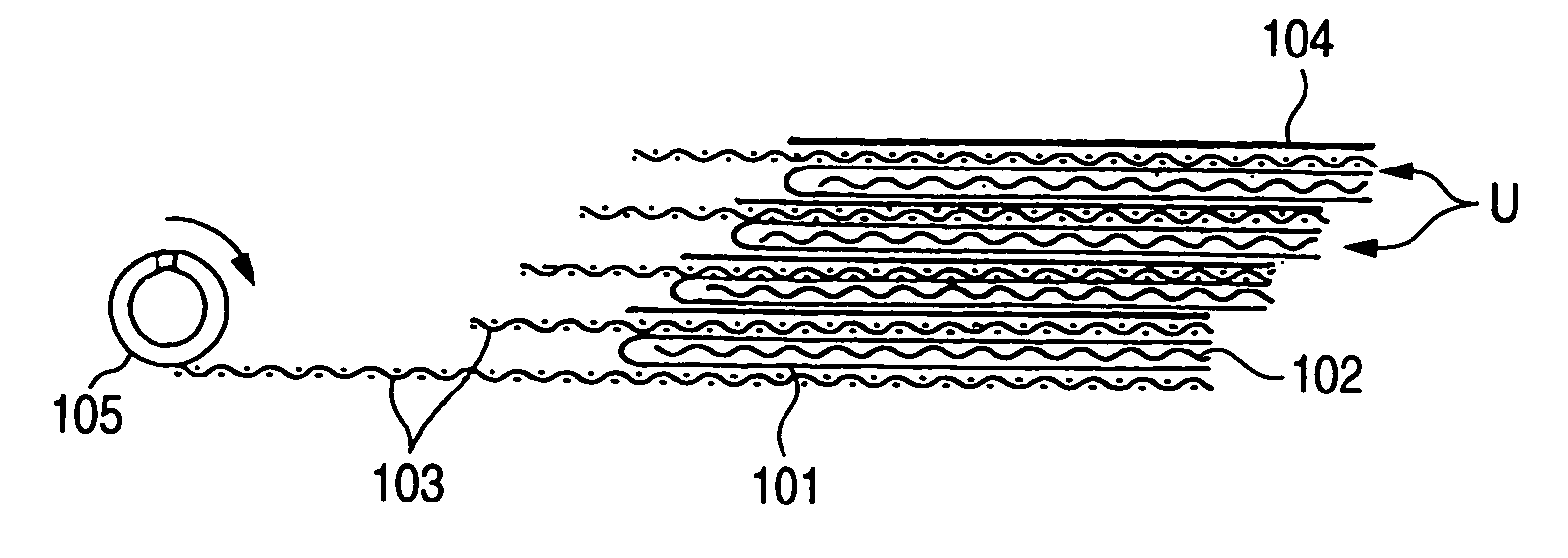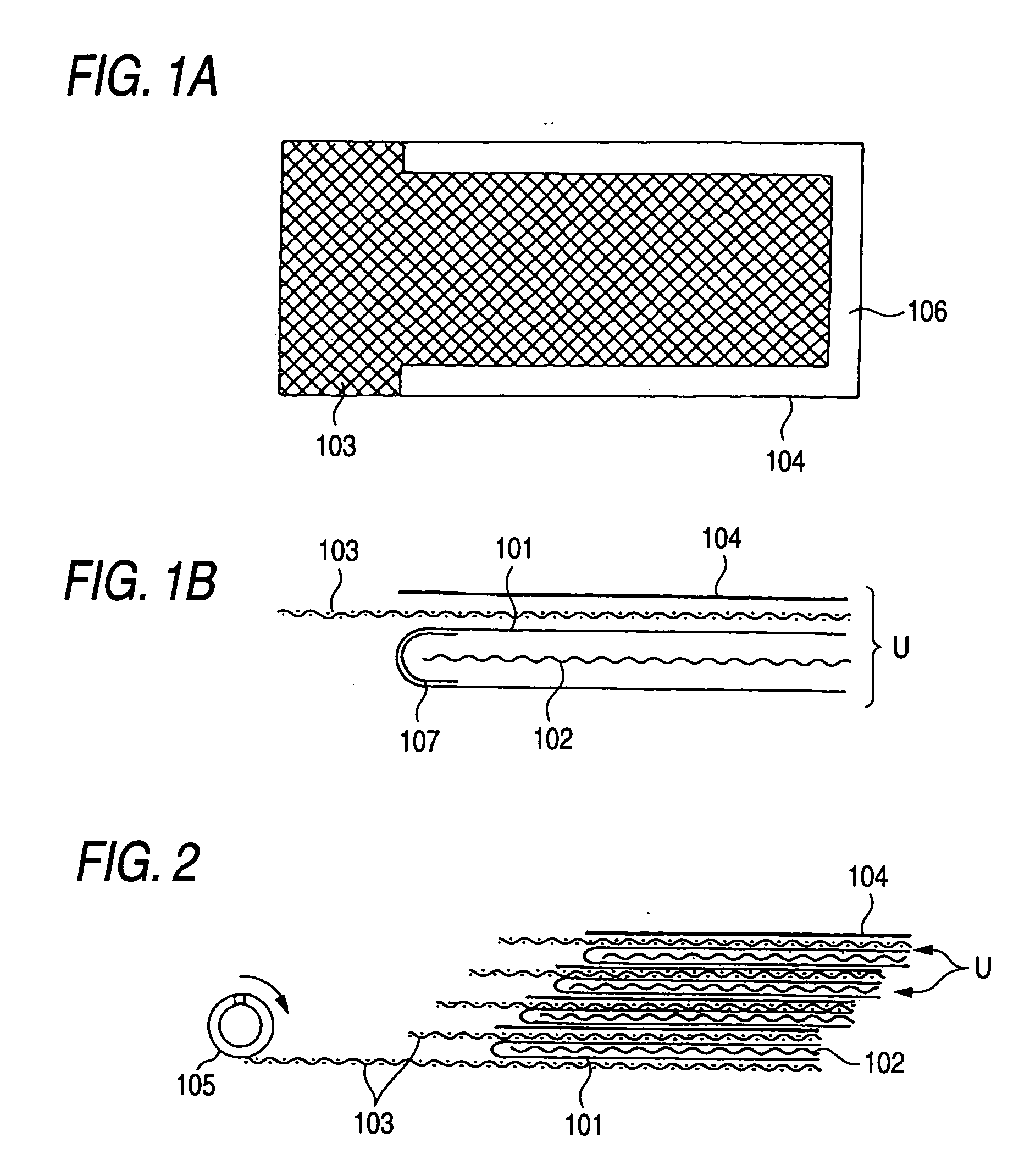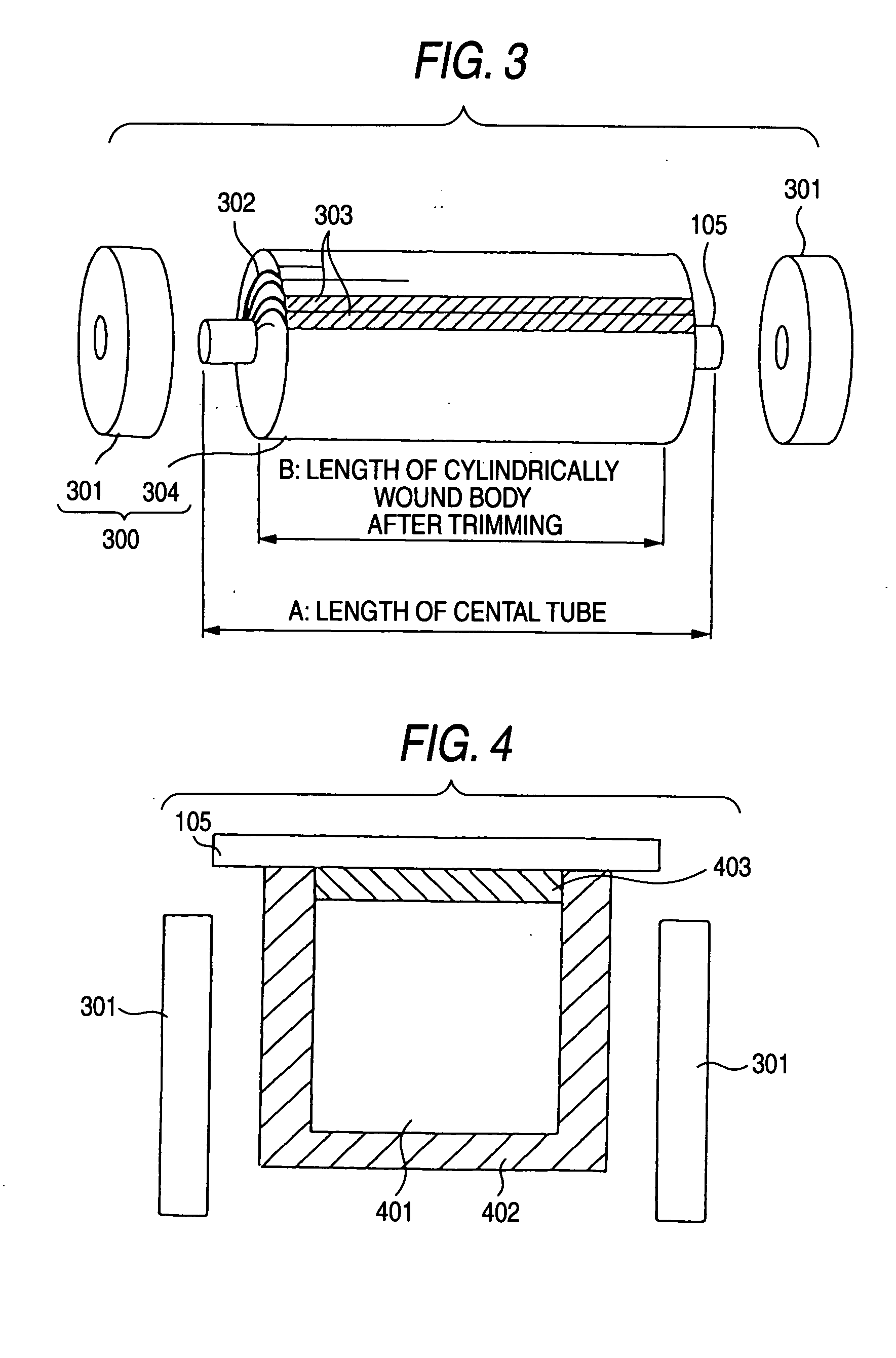Spiral membrane element and method of manufacturing the same
a spiral membrane element and spiral membrane technology, applied in the field can solve the problems of reducing the separation reducing the permeation performance of spiral membrane elements, and less effective side passage materials, so as to reduce the width of sealing portions, suppress the effect of any increase in manufacturing cost and reducing the loss of pressure per uni
- Summary
- Abstract
- Description
- Claims
- Application Information
AI Technical Summary
Benefits of technology
Problems solved by technology
Method used
Image
Examples
example 1
[0060] A spiral membrane element was fabricated in accordance with the manufacturing method of the present invention employing length of a central tube: 1,016 mm, length of a cylindrically wound body after trimming: 975 mm, width of an adhesive-sealed portion (adjacent to each trimmed portion): 15 mm, width of an adhesive-sealed portion (adjacent to the final end of a separation membrane): 25 mm, width of a protective tape: 25 mm, separation membrane: NTR-759HR (product of Nitto Denko Corporation), length of the separation membrane: 1,460 mm, width of the separation membrane: 1016 mm, the number of separation membrane units: 26, thickness of a feed-side passage material: 0.72 mm, and angle of intersections of a net of the feed-side passage material: 90°. An adhesive used was a thixotropic adhesive (UR-3501, product of H.B. Fuller Japan Co., Ltd.). Portions of the separation membrane to which the adhesive will be applied had the pores of their porous layers closed by melting under he...
PUM
| Property | Measurement | Unit |
|---|---|---|
| thickness | aaaaa | aaaaa |
| width | aaaaa | aaaaa |
| width | aaaaa | aaaaa |
Abstract
Description
Claims
Application Information
 Login to View More
Login to View More - R&D
- Intellectual Property
- Life Sciences
- Materials
- Tech Scout
- Unparalleled Data Quality
- Higher Quality Content
- 60% Fewer Hallucinations
Browse by: Latest US Patents, China's latest patents, Technical Efficacy Thesaurus, Application Domain, Technology Topic, Popular Technical Reports.
© 2025 PatSnap. All rights reserved.Legal|Privacy policy|Modern Slavery Act Transparency Statement|Sitemap|About US| Contact US: help@patsnap.com



